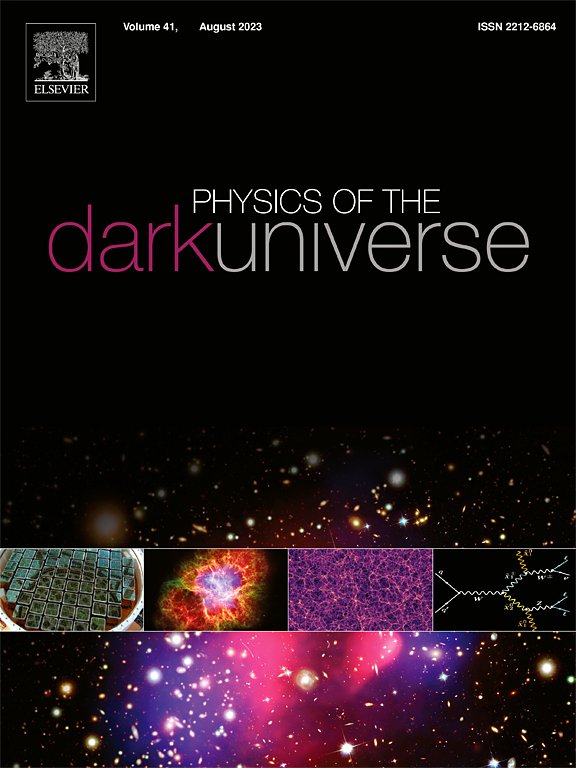Exploring Hu–Sawicki gravity through circular motion with trajectories and QPOs testing around a black hole
IF 5
2区 物理与天体物理
Q1 ASTRONOMY & ASTROPHYSICS
引用次数: 0
Abstract
Focusing on the influence of the model parameters on particle motion, we investigate the dynamics of test particles around a spherically symmetric, non-rotating black hole within the framework of Hu–Sawicki gravity. The black hole is characterized by four parameters: its mass , two dimensionless parameters and , and a mass scale parameter . To analyze the stability of spherical orbits, we employ the effective potential approach, deriving analytical expressions for the energy and angular momentum of test particles as functions of the black hole parameters. In this context, we tested the effective forces acting on the particles and determined the innermost stable circular orbits. To gain further insight into particle trajectories, we numerically integrate the equations of motion. In addition, we investigate epicyclic oscillations near the equatorial plane, obtaining analytical expressions for the radial, vertical, and orbital frequencies, as well as the frequency of periastron precession. Also, we examine particle collisions near the black hole horizon and compute the center-of-mass energy of such events. Our findings demonstrate that the black hole parameters significantly influence particle dynamics, revealing intriguing effects on orbital stability and energetic interactions.
求助全文
约1分钟内获得全文
求助全文
来源期刊

Physics of the Dark Universe
ASTRONOMY & ASTROPHYSICS-
CiteScore
9.60
自引率
7.30%
发文量
118
审稿时长
61 days
期刊介绍:
Physics of the Dark Universe is an innovative online-only journal that offers rapid publication of peer-reviewed, original research articles considered of high scientific impact.
The journal is focused on the understanding of Dark Matter, Dark Energy, Early Universe, gravitational waves and neutrinos, covering all theoretical, experimental and phenomenological aspects.
 求助内容:
求助内容: 应助结果提醒方式:
应助结果提醒方式:


